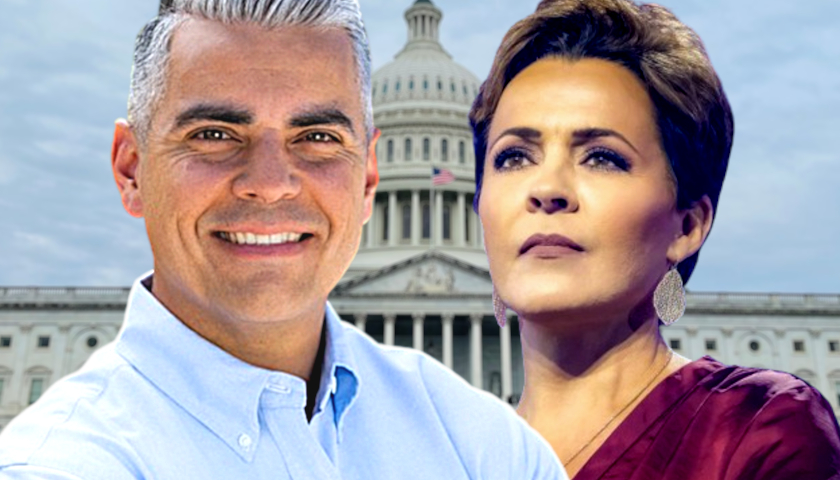Greta Callahan, president of the teachers’ chapter of the striking Minneapolis Federation of Teachers (MFT), told members rallying at the state Capitol Wednesday, “Our fight is against patriarchy, our fight is against capitalism, our fight is for the soul of our city.”
The teachers union and Minneapolis Public Schools (MPS) remain at a stalemate on a new contract, Patch reported.
As The Minnesota Sun noted Wednesday, classes have been canceled for more than 28,000 students, who also suffered school closures during the pandemic.
“Critics of the strike have pointed out that Minneapolis teachers earn an average salary of $75,000 per year, but union leaders say they are picketing because of the dismal wages for support staff,” the report added.
A list of union demands, which include salary increases, recruitment and retention of “educators of color,” reduced class sizes, and COVID safety, can be viewed here.
On Thursday, Callahan framed the union’s demands as necessary for students to be able to return to school:
We are ready to come to agreement. We are the ones who continue to move and right now Minneapolis Public Schools, leaders, the people at the table, HR consultants, and lawyers are telling us that they are not willing to move on our top priorities. That is reckless that is abusive. Our students deserve to be in school and for them to tell us that they are not willing to move for me that is, quite frankly, something that our members are not going to take.
Important morning message from our MFT presidents Shaun and Greta from our overpass pickets. pic.twitter.com/vkW13gWNmM
— MFT 59 (@MFT59) March 10, 2022
One teacher took to Twitter to assert that, when students come out to support teachers on the picket line, they are still learning.
“We are teaching them that collective action has the power to change the status quo,” Maria Cecilia Laden posted.
I couldn’t contain my happiness seeing my students today supporting their educators on the picket line.
We may not be in our classrooms, but we are still teaching our students. We are teaching them that collective action has the power to change the status quo. @EducationMN pic.twitter.com/81aloLcmu3
— Maria Cecilia Laden (@Maceci14) March 10, 2022
Senator Bernie Sanders (I-VT) tweeted his support for union members Thursday, stating, “The time is now to invest in public education,” but added union members are “on strike for decent pay and better working conditions,” without specific mention of students or their education.
The time is now to invest in public education. I am proud to stand with @MFT59 educators who are on strike for decent pay and better working conditions. https://t.co/M2rURKqDLY
— Bernie Sanders (@BernieSanders) March 10, 2022
But, John Hinderaker at Powerline observed Thursday the effects of the union’s current strike, and its demands to keep schools closed during the pandemic, on children’s learning loss:
Education Minnesota, the NEA branch that runs Minnesota’s public schools, has been making war on the state’s children for the last two years. In 2020 the teachers’ union demanded that the schools be shut down, and in a Democratic administration, what the union demands, it gets. The result, when test results came in at the end of the 2021 school year, was a catastrophic collapse in student performance.
That was bad enough. But, now that the schools are finally back in session, the Minneapolis union still doesn’t want to work. It has gone on strike, shutting down the schools once again. The context for the strike is grim: Minneapolis’s public schools are almost unbelievably bad, despite spending enormous amounts of money.
As in other large public school districts, MPS’ student enrollment has plummeted – about 13 percent since 2019 – a decline that has led to a drop in state funding and a $58 million budget shortfall, as the Star Tribune reported in February.
Safety concerns in the city, and the fact that the COVID-19 pandemic has allowed families to explore other education options, has led to the enrollment drop, said Eric Moore, MPS’ director of accountability, research, and equity.
MPS has received $159.4 million in federal funds through the Biden administration’s American Rescue Plan, and has used some to address budget gaps, but, as enrollment is expected to drop further, the district faces further deficits.
On Tuesday, MPS Superintendent Ed Graff said during a press conference after two years of a pandemic that “the social unrest, the racial reckoning that we have here in Minneapolis, and now we have our students again in a space where they’re not in school with their teachers.”
“Unfortunately, the reality is that we’re resource limited,” Graff continued, adding:
The finances that we have are not enough to provide the support that we need to provide every year. We struggle with the underfunding for special education and English-learner services about $60 million every year.
We do our best in this district to make sure that we are fiscally responsible good stewards of our money, making sure that when we have money that goes to support students, that it’s very direct, it’s in the classroom, it’s in curriculum that is relevant for our students.
“The district simply doesn’t have the money to fund everything that the teachers union wants,” Graff said. “I think we’re still very far apart in terms of where those proposals are, nearly $100 million differences … With our budget, I don’t see a way out of that.”
– – –
Susan Berry, PhD is national education editor at The Star News Network. Email tips to [email protected].
Photo “Greta Callahan” by Sigal Photos.








